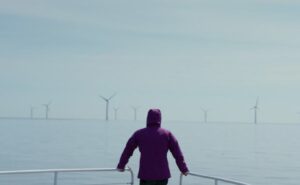Rudd buried with renewables, again
Kevin Rudd never quite got renewables. He arrived as prime Minister in 2007 with a 20 per cent renewable target – matched by the Coalition – and then kind of went off the rails. He woke up in a sunny disposition one May morning in 2009 and declared his ambition for Big Solar, and to build the world’s biggest solar plants. And so the Solar Flagships program was launched. But it was ill conceived and eventually foundered – although many in the renewables industry would be happy that most of the funds set aside for that program remain within the Australian Renewable Energy Agency, which has an altogether more deliberative approach on grant funding.
Rudd’s removal as Prime Minister in 2010 coincided with the day that the renewable energy target was split into a small scale and a large scale scheme – the legislation went through the Senate that morning. That initiative led to an explosion in rooftop solar demand, although it didn’t do much for large scale deployment. So it was ironic that on the day that Labor should finally reaffirm its support for the 41,000GWh renewables target for 2020 – and give a presumed fillip to large scale generation – that it should coincide with Rudd’s next date with destiny. But, just like the Big Solar idea, the numbers didn’t quite add up. The news of the RET was buried again, along with Rudd.
Do we have a real renewables target yet?
The affirming of the RET target should, in theory, give the green light for many stalled investments in wind farms, and for solar project developers to progress some of their plans. It is clear, however, that the big utilities will stall again, and bankers (just like Rudd on Thursday) will be unlikely to come to the party, given the upcoming election and the Coalition’s ambiguous public position on the future of the RET. As we suggested in our article last month, Coalition may stop wind, solar farms if demand stays weak, the Coalition’s private views are not so ambiguous.
They want yet another review of the RET by 2014 at the latest, and have threatened to bring that forward if, as the government now proposes, that the next review be legislated for 2016. There are two strong caveats to that, however. The first being Combet’s ability to bring legislation to parliament and getting it through both houses before the government implodes, and the ability of the Coalition to repeal it – along with the CCA, the CEFC, and the carbon price – should they win power, which now seems inevitable. That ability will depend on make up of the Senate, and if the Greens have the ability to block such changes. Asked by RenewEconomy today if he was concerned that renewables development would continue to be delayed, Combet said the government was trying to create certainty, but was being undermined by the “mayhem” of multiple Coalition policy positions.
Why the game has changed for Origin and others
Origin Energy CEO Grant King made one last ditched attempt to stop the RET in its tracks on Monday, although given the political situation as described above, it may well have been designed for the consumption of Coalition MPS. Combet was asked about Origin’s position this week and said that any company will clearly talk its book, and King clearly has a problem: He is investing billions in capital in an LNG plant but is scratching around for cash flow and facing ratings reviews. Cash flow and profits would normally come its electricity business, but the changing dynamics of demand, and the impact of solar and wind energy on energy markets – is causing profits to slump.
This graph below highlights at least part of the problem, and how dynamics and assumptions have changed in just a few years since Origin Energy started planning for the Mortlake gas fired power station, began construction, and commenced operations. The key to this graph is the disappearance of the peaking events, which were crucial to the profits of conventional fuels, and accounted for some one quarter of their revenue pie. To some, it’s symptomatic of the challenges being felt in Germany, where E.ON is considering closing a similar gas-fired plant just three years after opening it – a situation we highlighted in our article “The beginning of the end for centralised generation.”
What to do with all that wind waste?
It wasn’t just Origin Energy, the gas lobby and the coal lobby, complaining about wind and solar, it was also the enthusiasts for nuclear, which also finds itself sidelined by cheap wind and solar, and the changing dynamics of energy markets which effectively turns them upside down and will eventually leave little space for generation that is not flexible. The conventional power plans complain that wind is intermittent, but it is actually quite predictable, as Australia’s market operator has pointed out.
And this came in from the head of energy strategy for the UK National Grid, who said that over an 18 month period, the expected emissions benefit of using wind power – that is the amount of carbon dioxide saved by using wind to produce power – was reduced by just 0.1 per cent as a result of the need to use fossil fuel power stations as backup. He argued that “wind is more predictable in some senses than conventional power sources like coal or gas. A traditional power station like a nuclear plant could “trip and fall off in a matter of milliseconds”, he says. Wind turbines may have to be shut off to protect them in high wind conditions, but these are easier to predict than a nuclear power station suddenly cutting out.”
Meanwhile, the wind industry gained considerable traction in its fight with anti-wind campaigners after the release of two studies that suggested complaints about wind farms were driven by. This created a storm of online comments, but the best was this one, because it highlights some of the absurdity of the anti-wind campaigns, be they based on cost, reliability, or health: “The one thing the Wind Lobby are keeping very quiet about is all that windy waste. There’s still no 100 per cent safe way to contain it, and it will continue to blow around for hundreds of thousands of years. If the Romans had wind power, we’d still be dealing with it today.”
Why the sun king had to fall
Much has and will be written about the collapse of Suntech – once the poster child of the Chinese solar industry, once the world’s biggest manufacturer of solar panels, and once the extraordinary success story of Zhengrong Shi, an Australian researcher who went on to become the world’s first solar billionaire. The unravelling of Suntech is a personal disaster for Dr Shi, and probably a sad end to his bold venture. But if it didn’t happen to Suntech, it would have certainly happened to one of his major rivals, and possibly still will.
This story will likely be told over and over again in the solar sector. As this graph shows, there was once hundreds of car makers in the US before they consolidated into the big car makers, and a couple of niche players. There is nothing to suggest that it won’t happen in the China solar industry too.
In case you missed it …
This week’s essential reading:
Paul Gilding: Is victory at hand for the climate movement?
The big moves in energy storage …. here and here ….
And of course, Sophie Vorrath’s wrap of what the Pollies said this week .…










